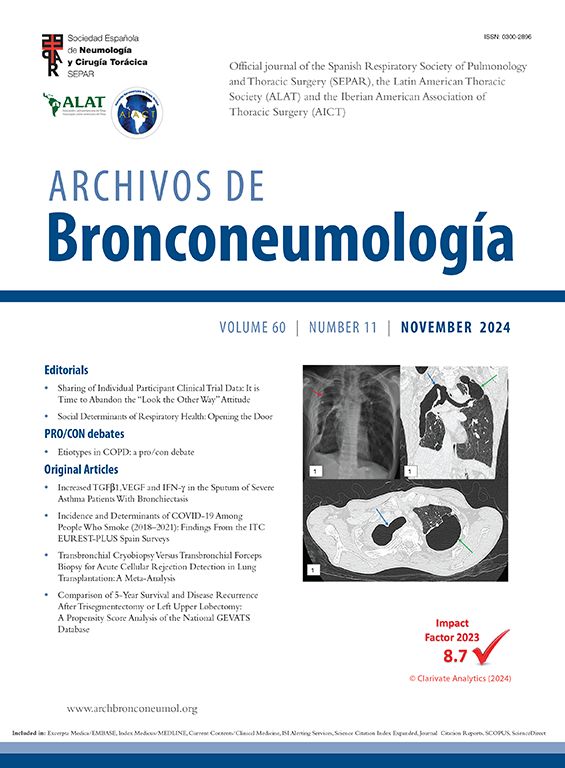La enfermedad pulmonar obstrutica crónica (EPOC) se caracteriza por ser una enfermedad inflamatoria que cursa con obstrucción al flujo aéreo. Sin embargo, la lesión histológica inicial de la EPOC sucede a nivel del bronquiolo respiratorio y la espirometría es incapaz de detectar su afectación hasta que la enfermedad está avanzada. Se han producido importantes avances en la caracterización del proceso inflamatorio a nivel de la pequeña vía aérea, pero sin embargo, no disponemos en la clínica de un marcador no invasivo de la afectación a dicho nivel que nos permita evaluar el daño y monitorizar el efecto del tratamiento. Hasta la fecha, la combinación de tratamientos broncodilatadores y corticoides inhalados es la opción terapéutica recomendada para los casos más graves, aunque sus efectos sobre la pequeña vía aérea son poco conocidos. Nuevos tratamientos que alcanzan la vía aérea distal y nuevas técnicas de evaluación de la pequeña vía aérea nos permitirán hacer un abordaje más completo de la enfermedad.
Chronic obstructive pulmonary disease (COPD) is characterized by inflammation causing airflow obstruction. However, the initial histological lesion of COPD occurs in the respiratory bronchiole and spirometry is unable to detect involvement of this area until the disease is advanced. Major advances have been made in characterizing the inflammatory process in the small airways. However, in clinical practice, a non-invasive marker of small airways involvement, which would allow injury and the effect of treatment to be monitored, is lacking. To date, the combination of bronchodilators and inhaled corticosteroids is recommended for the most severe cases, although the effects of this therapeutic option on the small airways are not well known. New treatments that reach the distal airways and novel techniques to assess the small airways will allow a more complete approach to this disease.










